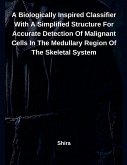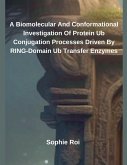Protein-drug binding Proteins are bio-macromolecules made up from the long chains amino acid residues called the building blocks. Proteins are essential parts of organisms and performs various functions varying from DNA replication to transporting molecules from one position to another within every cells in organism. Proteins differ from one another depending on their number and sequence of the amino acids, resulting into protein folding which eventually determines its activity in the body. The amino acid residues are bonded together by peptide bonds adjacent to each other. Amino acids are classified into essential amino acids-which cannot be produced by the body and non- essential amino acids-which can be produced by the body. The study of disease related proteins are one of the most important and laborious research tasks in biophysical chemistry. The main objective of biophysical studies includes understanding the molecular forces involved in the binding that control biological interactions between the target and the ligand and to use this information in the long run to find useful modulators of disease. The interactions of protein are diverse and the functions of the proteins are rationally manipulated by modifying, stabilizing and inhibiting through a wide range of classes of molecules. A diverse range of molecules, small molecules, peptides and natural products can modify the protein interactions by modifying the protein, the interacting ligand or both. Heme Proteins Heme proteins, a large class of metalloproteins, contains a heme prosthetic group which performs various important functions that includes oxygen binding (hemoglobin, myoglobin), oxygen metabolism (oxidases, peroxidases, and catalases) and electron transfer (cytochromes). The heme protein consist of an active site 'heme': an iron-protoporphyrin-IX complex at the centre of the conjugate base of porphyrin. Porphyrin rings are cyclic tetrapyrroles, consisting of four pyrrole rings attached to each other by four meso (methene) bridges namely ¿, ß, ¿ and .2 At the center of a highly hydrophobic and planar porphyrin ring, it contains a reduced form of iron atom (Fe2+) which can undergo reversible change in the oxidation state (e.g., Fe2+ Fe3+) that render heme an effective biological catalyst. Heme bound to the protein can be covalently, non-covalently or both. The iron in the heme is coordinated to the four nitrogen atoms of the porphyrin ring and also to a nitrogen atom of histidine amino acid residue leaving the six coordination site for a divalent atom (like O2, N2, NO, CO).
Bitte wählen Sie Ihr Anliegen aus.
Rechnungen
Retourenschein anfordern
Bestellstatus
Storno








